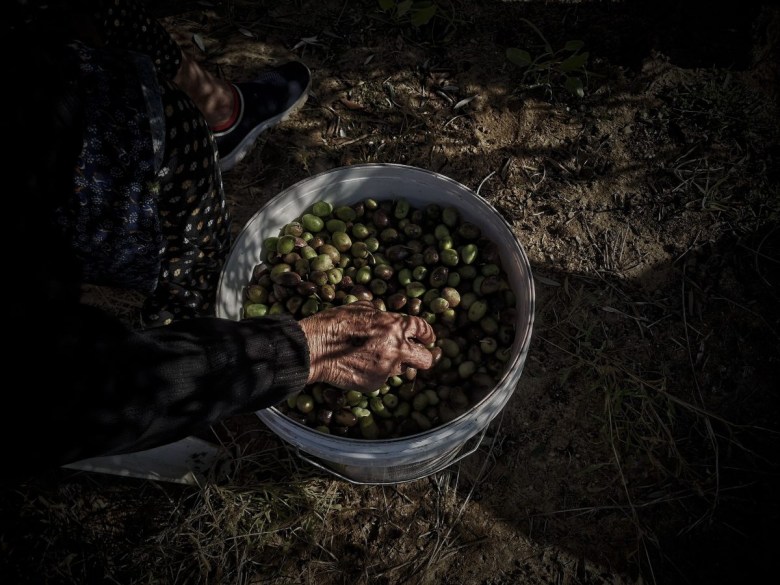
Palestinian photographer Majd Arandas was killed by an Israeli airstrike near his home in the Deir al-Balah Governorate in the central Gaza Strip on Wednesday, November 1. Remembered by friends and colleagues as a “kind and gentle soul,” the 29-year-old self-taught artist loved to take photographs of the Mediterranean sea and Gaza. The importance of the artist’s work lies in the urgency of documenting and celebrating Palestinian life, excavating pockets of optimism and resistance amidst loss and destruction.
Arandas foretold his fate in an opinion piece for Al Jazeera in 2016. “Where can I begin talking about Gaza and Palestine, and how can I begin when I know that I am the living dead? Everyone who writes about Palestine has prepared himself to be among the dead, but despite our prior knowledge of our fate when we write and write about this land, we do not stop or for a moment hesitate to inhale her love,” he reflected.
His love for Gaza shone through in his photographs, seen in his steadfast portrayals of joy and beauty. Whimsical compositions by the sea depict young boys jumping and playing. In a series of works focused on his grandmother, a survivor of the 1948 Nakba who was displaced from her native village of Isdud, Arandas portrays her as a symbol of strength and perseverance in Gaza, zooming in on her weathered hands harvesting olives against deep fertile earth. Traces of personal and cultural histories can be seen in the crisp light of ripe olives and the details of intricate embroidery adorning her hanging dress.
Photographer Julius Motal shared an insightful take on Arandas’s compositions at a vigil for fallen journalists in New York on November 6. “He often shot wide, and in looking at his images, my sense is he was trying to fit as much of the world into each frame as possible,” Motal said.
Arandas had a network of colleagues and friends around the world whom he never met due to the restrictions of living under siege. Photojournalist Rita Kabalan explained that the conditions of the Israeli blockade prevented him from many opportunities, and that he was killed “just as people were starting to take note of his work.”
As Israel continues its deadly attacks on Gaza and the West Bank, Arandas contributed prints to a fundraising sale organized by the Dubai-based gallery Gulf Photo Plus. He decided against featuring photographs of the bombardment, telling director Mohamed Somji: “I want to show photos of people playing and charging their phones and laughing and eating in the midst of all of this.”
Arandas largely photographed bustling scenes of life. In urban landscapes, both his protagonists and the city itself appear in motion.
“It was almost as if he was documenting the freedom of Gaza, as if there wasn’t this apartheid regime and disgusting occupation,” Maen Hammad told Hyperallergic. “Like many self-taught photographers, he was fascinated by the street as a medium to understand the world around him.”
Arandas graduated from Al Aqsa University in Gaza in 2016 and worked in communications and media at the Palestinian Al-Azhar Institute from 2022. He also trained as a news editor at the Sawa News Agency and worked at the local newspaper Al-Nidaa while volunteering for organizations such as Save the Children and the Palestinian Red Crescent Society.
The artist’s father, Fadl Arandas, recounted the circumstances of his son’s killing, explaining that Arandas ran to the top of the building when the bombing occurred to identify its source and then quickly left to help his afflicted neighbors. It was only a few minutes until they heard a second explosion of an Israeli missile that struck Arandas with shrapnel in the head and claimed his life.
“He dreamed of traveling to see the world,” said his brother Mou’ayad Arandas. “He was killed doing what he loved to do: helping people.”
The Palestinian Journalists Syndicate confirmed that Arandas was the 26th journalist killed since the Israeli aggression on the Gaza Strip. As of this writing, more than 14,000 Palestinians have been killed in Israel’s relentless bombardment of Gaza since October 7, including at least 53 journalists.
Arandas was a beloved son, brother, uncle, and friend. Devastated by his loss, his mother insisted on carrying him alongside men to his final resting place. “He was always smiling, always carrying his camera, and always saw the beauty of Gaza, in its land and sky,” Fadl Arandas told Hyperallergic. The artist hoped to pursue further studies and obtain his Master’s and PhD, his father added, and “dreamed of realizing his ambitions in a free Palestine.”
Last year, Arandas was forced to give up his camera to survive the constraints of life in Gaza. He continued to take photographs using his phone, and was working toward saving for a new camera. His final images documented Israeli attacks, white phosphorous bombs, grieving victims, and young children. His final wish was for his work and that of fellow Palestinians to be amplified. “All I care about these days is that our voice and cause reach the largest number of people,” he wrote.
More than anything, Arandas’s photographs enshrine his dream of a free Palestine, where animals roam free in open horizons, unaware of the blockade.
“Gaza is a city where dreams are born, where love poems are written, where the bride gets married in her white dress, and where heroes of the future are born,” Arandas wrote in 2016. “Gaza is the capital of peace and a symbol of pride. We are for Gaza and Gaza has no one but us.” His beautiful photographs deserve to be seen and remembered.